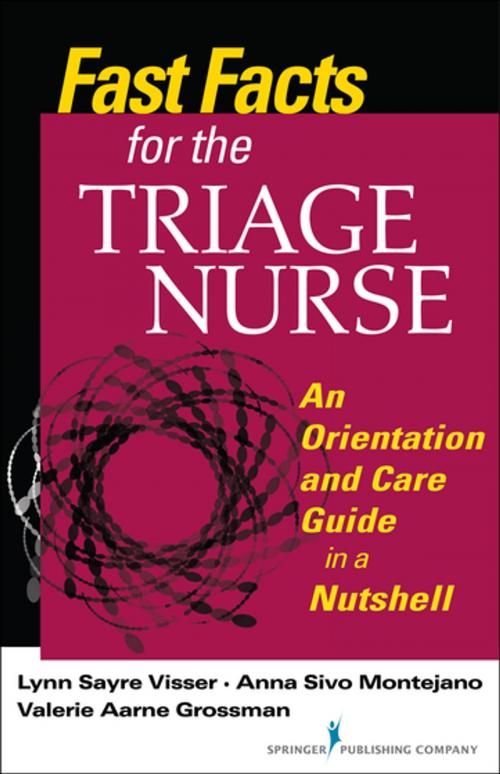Fast Facts for the Triage Nurse
An Orientation and Care Guide in a Nutshell
Nonfiction, Health & Well Being, Medical, Nursing, Emergency, Critical & Intensive Care| Author: | Lynn Sayre Visser, MSN, BS, RN, CEN, CPEN, CLNC, Valerie Aarne Grossman, MALS, BSN, RN, Anna Sivo Montejano, DNP, MSNEd, RN, CEN | ISBN: | 9780826122667 |
| Publisher: | Springer Publishing Company | Publication: | May 5, 2015 |
| Imprint: | Springer Publishing Company | Language: | English |
| Author: | Lynn Sayre Visser, MSN, BS, RN, CEN, CPEN, CLNC, Valerie Aarne Grossman, MALS, BSN, RN, Anna Sivo Montejano, DNP, MSNEd, RN, CEN |
| ISBN: | 9780826122667 |
| Publisher: | Springer Publishing Company |
| Publication: | May 5, 2015 |
| Imprint: | Springer Publishing Company |
| Language: | English |
This is a concise, user-friendly orientation guide and reference for new and seasoned nurses, paramedics, preceptors, educators, management teams, and anyone else working in the triage environment. It offers guidelines covering key processes and practices triage nurses use daily. Chapters address core elements of triage such as patient point of entry, acuity scales, and “red-flag” patient presentations and how to handle them; coordination and communication with other health care team members; and documentation.
The book offers practical information on triage for emergency department and urgent care settings, with useful tips for both triage orientees and preceptors. It addresses care considerations for specialized populations including geriatric and pediatric patients. The text supplies essential information on teaching and learning principles and the fostering of critical thinking skills, and covers such topics as compassion fatigue, customer service, legal concerns, core measures, and patient and staff safety. Trends in triage nursing such as electronic medical record considerations, provider in triage, and advanced triage protocols are included. Information is organized in brief, bulleted “bites” for knowledge at a glance, and Fast Facts in a Nutshell boxes reinforce key concepts.
Key Features
- Provides essential guidance for key procedures and protocols in an easy-to-read, easy-to-access format
- Offers practical triage information with a focus on emergency department and urgent care settings
- Focuses on processes, critical thinking, and the legal aspects of triage
- Includes care considerations for specific patient populations
- Incorporates advice from seasoned emergency department nurses and triage educators
This is a concise, user-friendly orientation guide and reference for new and seasoned nurses, paramedics, preceptors, educators, management teams, and anyone else working in the triage environment. It offers guidelines covering key processes and practices triage nurses use daily. Chapters address core elements of triage such as patient point of entry, acuity scales, and “red-flag” patient presentations and how to handle them; coordination and communication with other health care team members; and documentation.
The book offers practical information on triage for emergency department and urgent care settings, with useful tips for both triage orientees and preceptors. It addresses care considerations for specialized populations including geriatric and pediatric patients. The text supplies essential information on teaching and learning principles and the fostering of critical thinking skills, and covers such topics as compassion fatigue, customer service, legal concerns, core measures, and patient and staff safety. Trends in triage nursing such as electronic medical record considerations, provider in triage, and advanced triage protocols are included. Information is organized in brief, bulleted “bites” for knowledge at a glance, and Fast Facts in a Nutshell boxes reinforce key concepts.
Key Features
- Provides essential guidance for key procedures and protocols in an easy-to-read, easy-to-access format
- Offers practical triage information with a focus on emergency department and urgent care settings
- Focuses on processes, critical thinking, and the legal aspects of triage
- Includes care considerations for specific patient populations
- Incorporates advice from seasoned emergency department nurses and triage educators















